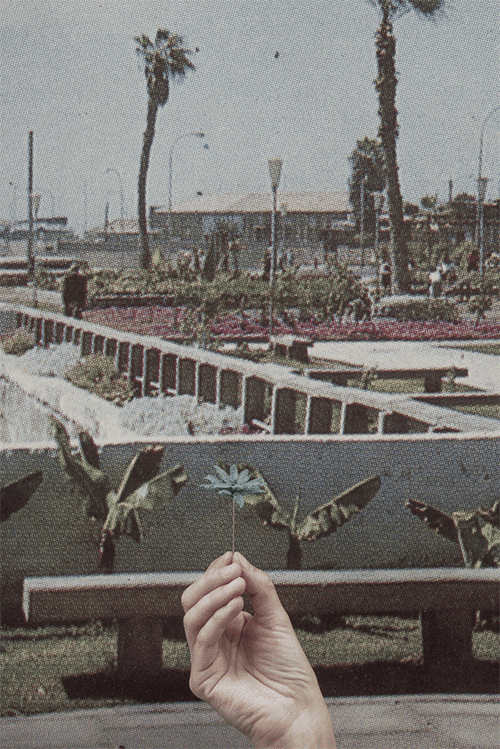Botany: what it means to be from somewhere
After looking at the reconfigured image of the last experiment, I started a small research project to explore the issues related to colonialism and species categorization (Davis, et al., 2011; Mastnak et al., 2014; Chew & Hamilton, 2010). One of the extra-visual datasets collected during the fieldwork was information about which kind of species people plant in their garden and how they refer to them. So after the third field trip, I had a list of more commonly used species and some notes about them. By looking at this information I was able to realise that in Iquique, the palm was the most commonly planted tree in town and most people liked it. It was not just the idea of a city mayor, but a shared collective aesthetic appeal, despite the challenging geo-conditions that Iquique offers for the growth of these species. At the same time, in Puerto Varas, the most common plants were roses. They were not just part of the City's slogan (City of Roses), but a common belief that roses were part of city identity. Both (palm and roses) are alien species, planted later in the history of the city. Taking into account Mastnak and others’ (2014) approach to native classification and how this can be considered as part of the colonial matrix of power, the arrival of colonisers define a state of nature that negates the manipulation and presence of previous inhabitants. I decided to experiment with a new notion of nativeness or belonging, inscribing both species as part of the landscape and community identity.
For this purpose, I created a small animation. I used one postcard image of each place: the Llanquihue Lake and Osorno volcano in the case of Puerto Varas, and an image of Cavancha in the case of Iquique. I scanned the postcard and printed a large (90 x 120 cm) copy. In front of the image of Puerto Varas, I used a woman's hand rotating a plastic rose. For the Iquique animation, I used the same hand showing and rotating a small plastic version of a palm. I photographed the movement and created a small gif animation. The result was that the plastic versions of both plants subscribed to the clichéd image of a postcard of landscape representation. The aim was to reclaim belonging, to recognise people's narratives and ideas about both plants, despite academic analysis where both species are seen as aliens who do not belong to both places.
